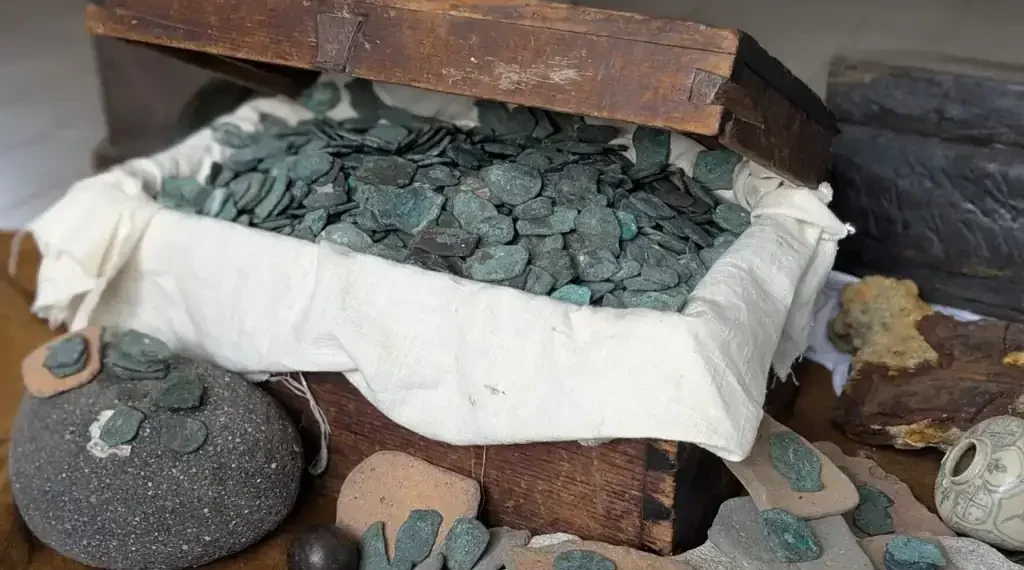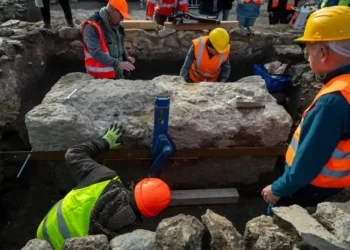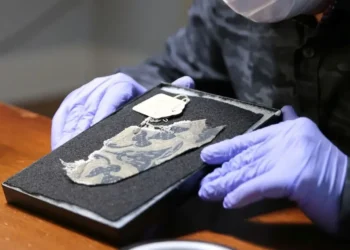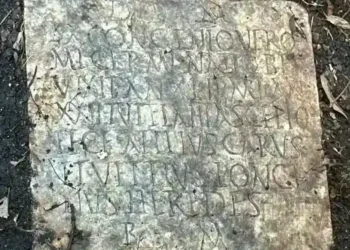Published: October 17, 2025, 22:05 EDT
Hidden beneath the turquoise waters off Florida’s Atlantic coast, divers have uncovered an extraordinary find: a trove of gold and silver coins believed to be worth more than $1 million. The discovery, announced this week by the shipwreck salvage company 1715 Fleet – Queens Jewels LLC, adds another chapter to the centuries-old saga of one of history’s most famous maritime disasters — the 1715 Spanish Treasure Fleet.
The Discovery Beneath Florida’s ‘Treasure Coast’
The coins were discovered earlier this summer by a team of divers working under federal and state permits near the stretch of shoreline known as Florida’s “Treasure Coast,” between Melbourne and Fort Pierce.
According to 1715 Fleet – Queens Jewels LLC, more than 1,000 silver and gold coins were found buried in shallow waters, just meters from the coastline. Many of the coins are believed to have originated from Spanish colonial mints in Bolivia, Mexico, and Peru — territories that supplied much of the Spanish Empire’s wealth during the 17th and 18th centuries.
Some of the coins still bear legible dates and mint marks, which experts say could help historians identify their precise origins and the vessels they came from.
“This discovery is not only about the treasure itself, but the stories it tells,” said Sal Guttuso, the company’s director of operations. “Each coin is a piece of history — a tangible link to the people who lived, worked, and sailed during the Golden Age of the Spanish Empire. Finding 1,000 of them in a single recovery is both rare and extraordinary.”
The 1715 Fleet: A Tragic Voyage Home
The recovered treasure comes from the fabled 1715 Spanish Fleet — a convoy of 11 ships that departed Havana, Cuba, bound for Spain. The fleet carried immense wealth extracted from the Americas, including gold, silver, jewels, and other valuables from Spain’s colonies in the New World.
But on July 31, 1715, disaster struck. A powerful hurricane caught the fleet off Florida’s east coast, wrecking nearly all the ships and sending tons of treasure to the ocean floor. Only one ship is believed to have survived.
Historians estimate that the 1715 Fleet carried one of the largest shipments of colonial riches ever assembled by Spain. The loss devastated the Spanish economy at the time and turned Florida’s coastal waters into one of the world’s most lucrative — and dangerous — treasure zones.
Over the centuries, storms, erosion, and modern technology have slowly revealed fragments of the wrecks. Millions of dollars in gold and silver coins have been found by salvagers, divers, and even beachgoers along this coastal stretch now aptly known as the Treasure Coast.
Modern Salvage Operations and Strict Regulations
Recovering historical artifacts from state waters is heavily regulated. Under Florida law, any treasure trove or historic material deemed “abandoned” on state-owned land or waters legally belongs to the state.
Private recovery companies, such as 1715 Fleet – Queens Jewels LLC, must obtain federal and state permits to conduct excavations. These permits require transparency and collaboration with heritage authorities.
Salvagers are required to submit detailed inventories of all recovered artifacts each season. The Florida Division of Historical Resources reviews these lists and reserves up to 20% of the findings for state research collections or public display in museums.
The remainder of the recovered material is divided between the company and its subcontractors, in an arrangement approved by a federal court.
“We want to do it right,” Guttuso told The Associated Press. “It benefits the people of Florida — they end up in the museums.”
Preserving History Beneath the Waves
Guttuso’s team employs a mix of advanced technology and hands-on excavation. Divers use underwater metal detectors, sand-fanning techniques, and gentle suction tools to carefully extract coins and artifacts buried beneath sediment.
Every find is cataloged and photographed before being sent for expert analysis. Marine archaeologists work alongside the salvors to identify historical context while ensuring compliance with heritage protection standards.
The site of the 1715 Fleet remains one of the most studied shipwreck zones in the world. According to the 1715 Fleet Society, a nonprofit organization dedicated to preserving the history of the fleet, the discoveries made over the past six decades have reshaped understanding of Spain’s maritime trade, shipbuilding, and navigation during its imperial zenith.
Past Discoveries and Ongoing Challenges
The latest recovery is not the first major find from the 1715 Fleet site. Over the years, dozens of expeditions have uncovered everything from gold chains and emerald jewelry to Spanish escudos and silver reales.
However, the treasure’s allure has also sparked controversy. In 2024, Florida officials announced they had recovered dozens of gold coins that had been stolen from the site by a subcontractor linked to a salvage operation. The suspect was identified as a family member of a team contracted by 1715 Fleet – Queens Jewels LLC.
Such incidents highlight the delicate balance between archaeological preservation and private recovery. While salvage operations provide valuable artifacts and data, they must operate transparently under public oversight to prevent the loss or illicit trade of historical objects.
A Legacy of Wealth and Shipwrecks
For historians, the discovery serves as a powerful reminder of the risks of maritime exploration and the global ambitions of the Spanish Empire. Each artifact retrieved from the seabed is a fragment of a larger narrative — one of colonial conquest, economic ambition, and human tragedy.
“These finds tell us not just about treasure, but about the people behind it — sailors, craftsmen, merchants, and the entire transatlantic system that defined an era,” said a statement from the 1715 Fleet Society.
As new technologies make underwater exploration safer and more precise, experts believe even greater discoveries could await along Florida’s seabed — relics that continue to connect the present to a long-submerged past.
This article was rewritten by JournosNews.com based on verified reporting from trusted sources. The content has been independently reviewed, fact-checked, and edited for accuracy, neutrality, tone, and global readability in accordance with Google News and AdSense standards.
All opinions, quotes, or statements from contributors, experts, or sourced organizations do not necessarily reflect the views of JournosNews.com. JournosNews.com maintains full editorial independence from any external funders, sponsors, or organizations.
Stay informed with JournosNews.com — your trusted source for verified global reporting and in-depth analysis. Follow us on Google News, BlueSky, and X for real-time updates.














